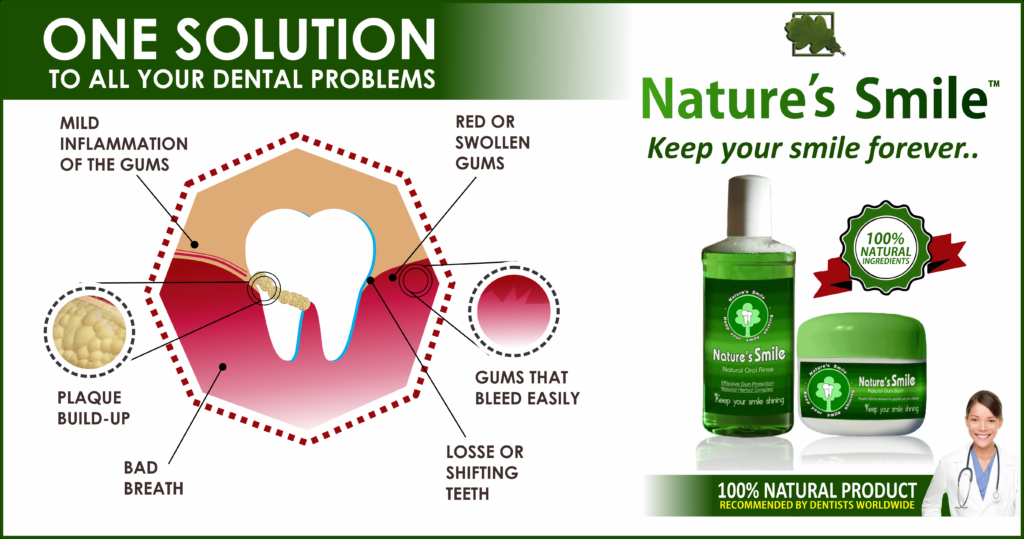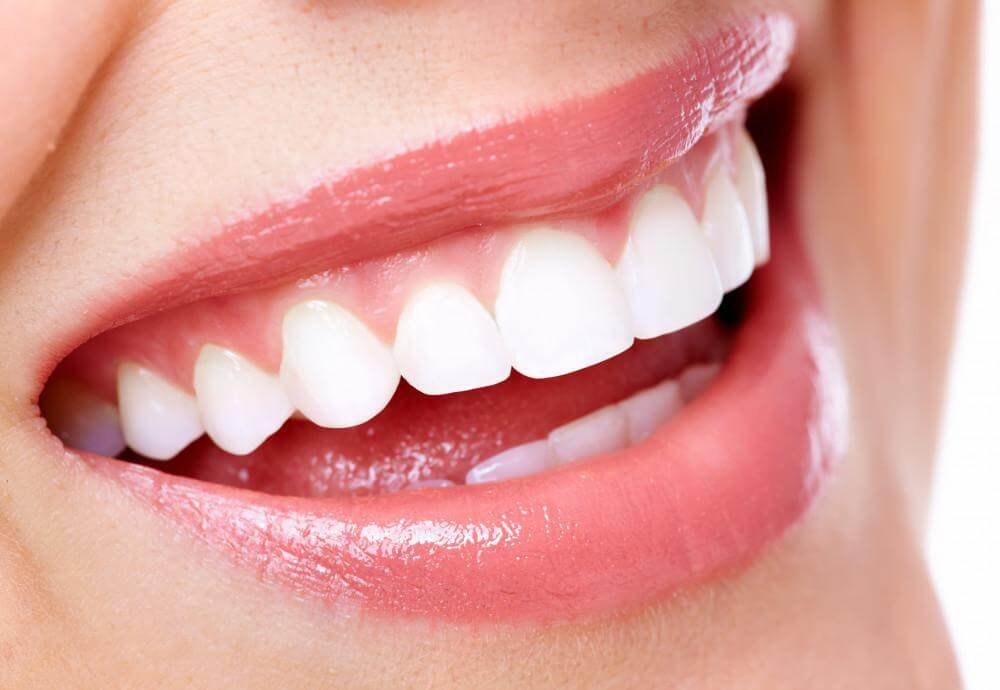The health of our gums is essential to maintaining good oral hygiene and overall health. Gum line problems are one of the most common dental issues faced by people worldwide. These problems can range from minor gum inflammation to severe periodontal disease, which can lead to tooth loss and other health complications. Understanding common gum line problems is crucial for maintaining healthy teeth and gums.
In this article, we will explore some of the most common gum line problems, including gingivitis, periodontitis, receding gums, gum inflammation, gum abscesses, and tooth sensitivity. We will also introduce an innovative solution known as “Nature’s Smile Gum Healing Solution,” a natural remedy with regenerative properties that aids in the recovery of damaged gum tissue and how Nature’s Smile can be a valuable addition to your oral care routine.

Gingivitis
Gingivitis, a common form of periodontal disease, is characterized by inflammation of the gum tissue that can progress to more severe forms if left untreated. The condition is caused by plaque buildup, which results from poor oral hygiene habits. Symptoms include redness, swelling, and bleeding gums while brushing or flossing. Gingivitis is preventable through good oral hygiene practices such as regular brushing and flossing and biannual dental check-ups.
How to avoid gingivitis?
Preventive measures are essential in avoiding gingivitis. Brushing twice a day with fluoride toothpaste for at least two minutes and flossing daily can help remove plaque buildup along the gum line. Rinsing with an antiseptic mouthwash can also reduce plaque accumulation. A balanced diet that includes plenty of fruits and vegetables can provide necessary nutrients for healthy gums while limiting sugary foods helps prevent bacterial growth in the mouth. Home remedies like saltwater rinses or hydrogen peroxide solutions may alleviate gingivitis symptoms but should not replace professional dental care. If gingivitis goes untreated, it could lead to periodontitis – a severe form of gum disease that affects both the gums and bones supporting teeth.

Periodontitis
Periodontitis is a chronic inflammatory condition that affects the periodontal tissues, including the alveolar bone and periodontal ligament. It is caused by the buildup of plaque and tartar on teeth, leading to gum inflammation and ultimately tooth loss. Risk factors for developing periodontitis include poor oral hygiene, smoking, genetic predisposition, certain medications or medical conditions, and hormonal changes.
Complications of untreated periodontitis can be severe and may include tooth loss, bone destruction in the jawbone, abscesses or infections in the gums or bones around teeth, and even systemic health issues such as heart disease or stroke.
Prevention and Treatment of Periodontitis
Treatment options for periodontitis depend on the severity of the disease but typically involve professional cleaning to remove plaque and tartar buildup along with good oral hygiene practices at home. Success rates for treatment vary depending on how early the condition is detected and treated.
In order to prevent periodontitis from progressing further or developing in the first place, it’s essential to maintain good oral hygiene habits such as brushing twice a day with fluoride toothpaste, flossing daily, using mouthwash regularly. Additionally, quitting smoking if you smoke can reduce your risk factor significantly.

Receding Gums
The gradual loss of gum tissue that exposes the root of a tooth, known as receding gums, can lead to dental sensitivity, increased risk of decay and infection, and ultimately tooth loss if left untreated. This condition is commonly caused by poor oral hygiene habits such as aggressive brushing, tobacco use, genetics, hormonal changes in women due to pregnancy or menopause, and certain medical conditions such as diabetes.
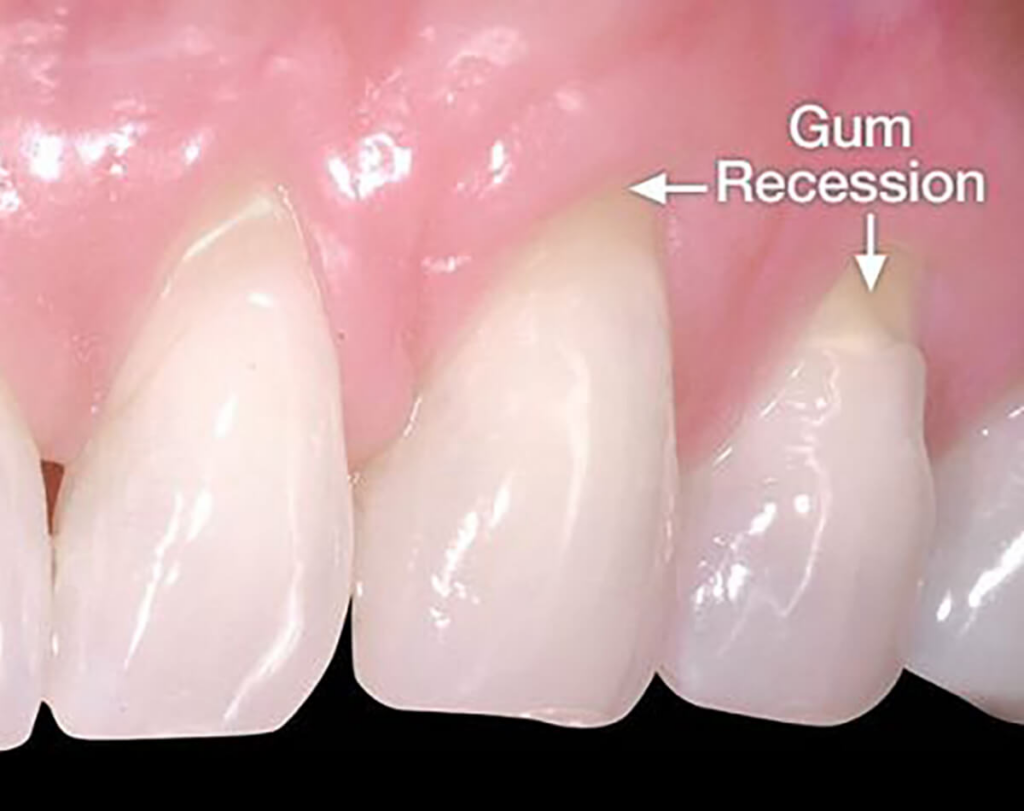
Receding Gums Treatment and Prevention
To prevent receding gums from developing or worsening over time, individuals should prioritize good oral hygiene practices such as brushing twice daily with a soft-bristled brush and fluoride toothpaste. It is also recommended to floss daily and schedule regular check-ups with a dentist for professional cleaning.
Treatment options for reverse receding gum line vary depending on the severity of the condition. For mild cases where only minimal recession has occurred, deep cleaning may be recommended to remove plaque buildup around the affected area. In more advanced cases where significant gum tissue has been lost exposing the root surface of teeth, surgical intervention may be necessary to restore gum tissue through grafting procedures.
Gum Inflammation
Gum inflammation, also known as gingivitis, is a reversible condition characterized by redness, swelling, and tenderness of the gum tissue that can progress to more severe forms of periodontal disease if left untreated. Poor oral hygiene habits like infrequent brushing and flossing or failing to visit a dentist regularly can lead to plaque buildup on teeth and gums. Plaque contains bacteria that produce toxins which irritate the gum tissue causing inflammation.
One common sign of gum inflammation is bleeding while brushing or flossing. Other symptoms include bad breath, receding gums, and gum line discoloration. While gingivitis is typically painless in its early stages, advanced cases may cause discomfort or tooth sensitivity. If left untreated, it can progress to periodontitis – an irreversible form of periodontal disease that damages the bone supporting teeth leading to tooth loss.
How to avoid Gum inflammation
Preventing gingivitis requires establishing good oral hygiene habits such as brushing at least twice daily with fluoride toothpaste for two minutes each time and flossing daily to remove plaque from between teeth. Regular dental checkups and cleanings are also important as your dentist can detect signs of gum inflammation early on when they are most treatable.
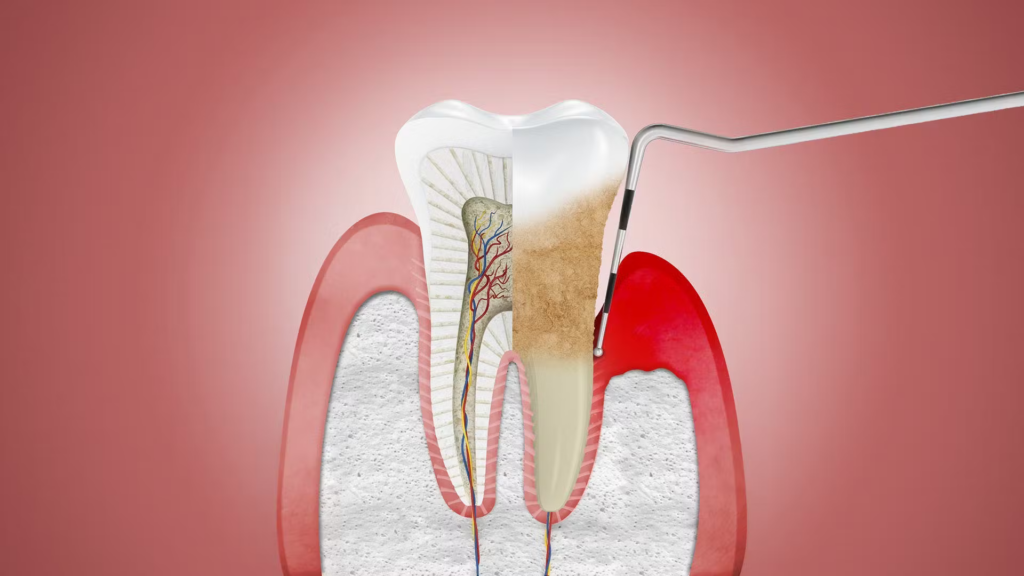
Gum Abscess
Gum abscess is a common dental problem that occurs due to bacterial infection in the gum tissue. The symptoms of gum abscess include pain, swelling, and redness around the affected area. The causes of gum abscess can be poor oral hygiene, tooth decay, or trauma to the gums. Treatment for gum abscess involves draining the pus from the affected area and taking antibiotics to eliminate the infection. Prevention measures include maintaining good oral hygiene practices such as brushing twice daily, flossing regularly, and visiting a dentist for routine check-ups.
Symptoms and Causes
Gum abscess is characterized by a painful bump on the gum line, which can be accompanied by redness, swelling, and bleeding. Other common symptoms of gum abscess include bad breath, sensitivity to hot or cold food and drinks, fever, and swollen lymph nodes. The most common cause of gum abscess is bacterial infection resulting from poor oral hygiene habits such as irregular brushing or flossing. However, other factors such as tooth decay, trauma to the gums or teeth and weakened immune systems can also contribute to this condition.
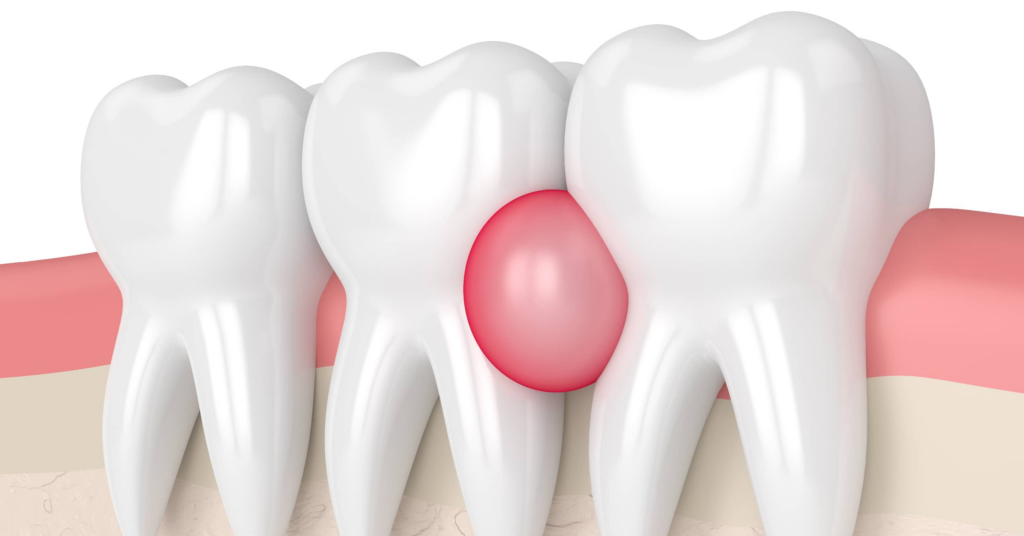
Treatment and Prevention
Effective management of gum line problems involves implementing preventive measures for gum line and utilizing treatment options to alleviate pain, reduce inflammation, and promote healing. Preventive measures include maintaining good oral hygiene by brushing twice a day, flossing daily, and using an antiseptic mouthwash. Regular dental check-ups are also essential to detect early signs of gum line problems before they worsen.
Home remedies such as saltwater rinses and warm compresses can also help alleviate symptoms such as swelling and tenderness. If the problem persists or worsens despite home remedies, a dentist may recommend professional treatment options such as scaling and root planing or periodontal surgery. It is important to address gum line problems promptly as they can lead to more serious issues such as tooth loss if left untreated.
https://gumlinehealer.com/preventive-measures-for-gum-line/
Tooth Sensitivity
Tooth sensitivity is a common dental problem that affects millions of people worldwide. It occurs when the tooth’s enamel, which is the protective layer surrounding the tooth, becomes worn down or damaged. This exposes the sensitive inner part of the tooth called dentin, causing pain and discomfort when exposed to certain stimuli such as hot or cold temperatures, sweet foods or drinks, and even air. In this discussion, we will examine the symptoms and causes of tooth sensitivity, as well as explore available treatment options and prevention measures to alleviate this condition.
Symptoms and Causes
The symptoms and causes of gum line problems have been widely studied in both the dental and medical fields. Gum recession, where the gums pull back from the teeth, is a common issue that affects many people. Symptoms of gum recession include tooth sensitivity, longer looking teeth, and an exposed root surface. Other common symptoms of gum line problems include bleeding gums when brushing or flossing, swollen or red gums, bad breath, loose teeth, and changes to the bite.
Gum line problems can be caused by various factors such as genetics, poor oral hygiene habits (such as not brushing or flossing enough), aggressive brushing techniques that wear down the gum tissue over time, hormonal changes during pregnancy or menopause in women which can affect the health of gums as well as other parts of the body. Additionally, smoking cigarettes or using other tobacco products increases your risk for gum disease and can make existing issues worse. It is important to address these causes and prevent further damage to your oral health and overall well-being through good oral care practices.
Treatment and Prevention
Treatment of gum line problems depends on the severity of the condition. Mild cases can be treated with preventive measures, such as maintaining good oral hygiene practices like brushing twice a day, flossing daily, and using an antiseptic mouthwash to reduce bacterial growth in your mouth. For more severe cases, you may need professional dental treatment. This can include scaling and root planing (deep cleaning), antibiotics, periodontal surgery or laser therapy.
Home remedies such as saltwater rinses or oil pulling may provide temporary relief but are not a substitute for professional treatment. The best way to prevent gum line problems is through regular dental check-ups and cleanings every six months, along with practicing good oral hygiene habits at home.
Prevention Tips
Proper Oral Hygiene
Establishing and consistently following a thorough oral hygiene routine can significantly reduce the occurrence of issues associated with the gum line. The importance of flossing cannot be overstated in this regard, as it helps to remove plaque and food particles that may accumulate between teeth. Proper brushing techniques are also critical, as they help to remove food particles that get trapped in hard-to-reach areas. When brushing, it is advisable to use a soft-bristled brush and fluoride toothpaste, moving the brush back-and-forth gently to remove plaque from the tooth surfaces.
Oral hygiene should not be taken for granted if one desires good gum health. By taking preventive measures through proper oral hygiene practices coupled with regular dental check-ups, one can maintain healthy gums for longer periods while avoiding painful procedures such as extractions or fillings due to severe gum disease.

Regular Dental Check-ups
Regular dental check-ups provide a crucial opportunity for dentists to examine the teeth and gums, clean them thoroughly, offer tailored advice on oral care routines, and detect any signs of disease or infection before they escalate into more significant issues. These routine visits are essential because they allow dentists to identify potential problems early on, which is vital for maintaining good oral health. During these check-ups, the dentist will typically perform a visual inspection of your mouth looking for any visible signs of gum disease such as redness, swelling, or bleeding. They may also use special instruments to measure the depth of spaces between your teeth and gums known as ‘pockets.’ By measuring pocket depths regularly over time, dentists can identify changes that could indicate underlying gum disease.
The importance of dental cleaning during these appointments cannot be overstated either. The dentist will remove plaque and tartar buildup from hard-to-reach areas using specialized equipment that makes it easier to clean teeth thoroughly. This deep cleaning helps prevent gum disease by removing harmful bacteria from your mouth and preventing it from spreading further. Regular dental check-ups are an essential part of maintaining good oral health; they enable early detection of gum disease and provide an opportunity for preventative measures like regular cleaning to be implemented.

Healthy Lifestyle Habits
Adopting healthy lifestyle habits has been shown to play a significant role in promoting optimal oral health and preventing potential issues. Here are four ways individuals can promote healthy gums through their lifestyle choices:
- Healthy eating: A diet rich in essential nutrients such as vitamins A, C, and D, calcium, and phosphorus is crucial for maintaining healthy gums. These nutrients help strengthen the teeth and prevent gum disease.
- Stress management: Chronic stress can weaken the immune system and increase inflammation throughout the body, including the gums. Engaging in stress-reducing activities such as yoga or meditation can help lower stress levels and improve overall oral health.
- Quitting smoking: Smoking not only stains teeth but is also linked to gum disease and tooth loss. Quitting smoking can significantly reduce an individual’s risk of developing these conditions.
- Regular exercise: Exercise improves blood flow throughout the body, including the gums. Increased blood flow helps deliver essential nutrients to the gums while carrying away harmful toxins.
By adopting these healthy lifestyle habits, individuals can promote optimal oral health and prevent common gum line problems from occurring or worsening. However, if any concerns arise about potential gum issues despite these efforts, seeking professional help from a dentist is recommended.
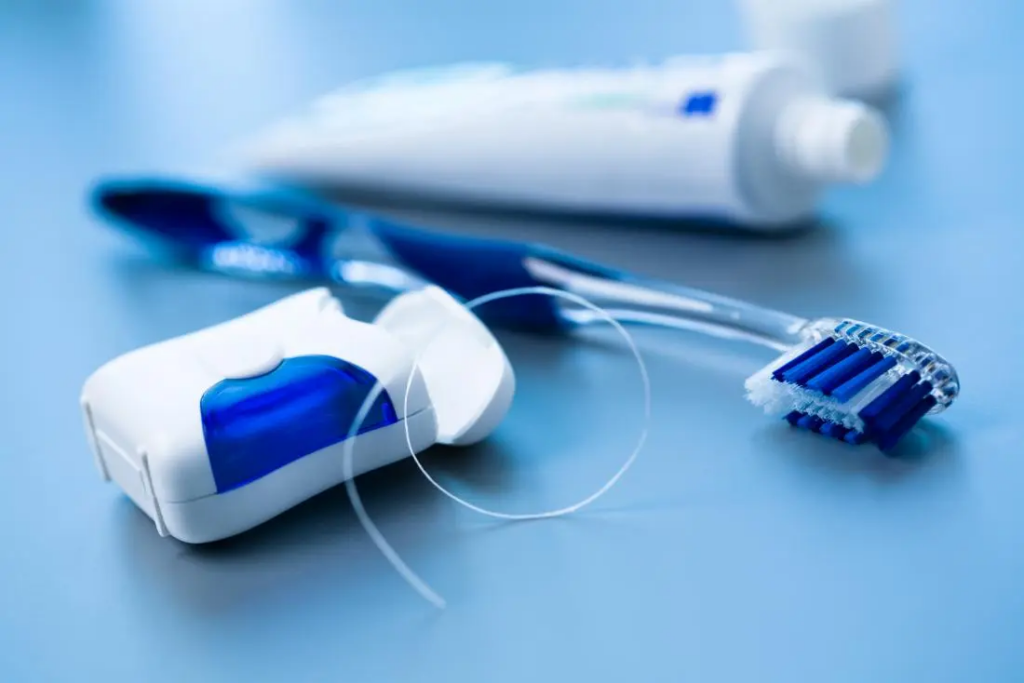
When to Seek Professional Help?
It is recommended to seek professional help if one experiences persistent gum bleeding, swelling, or tooth sensitivity. These signs may indicate the presence of gum line problems that require prompt attention from a dental professional. Ignoring these symptoms can lead to more serious issues such as periodontal disease, which can cause irreversible damage to the teeth and gums.
In addition to seeking professional help for persistent gum line problems, it is also important to practice regular self-care habits. This includes brushing twice daily with a fluoride toothpaste, flossing at least once per day, and using an antiseptic mouthwash. Maintaining good oral hygiene habits can prevent common gum line problems and reduce the likelihood of needing professional help in the future.

To further understand common gum line problems, it’s helpful to examine different causes and risk factors associated with these issues. The table below outlines some of the most common causes and risk factors for gum line problems:
| Cause/Risk Factor | Explanation |
|---|---|
| Poor Oral Hygiene | Failing to brush regularly or properly can lead to plaque buildup on teeth and gums |
| Tobacco Use | Smoking or using smokeless tobacco products increases the risk of developing gum disease |
| Genetics | Some individuals are predisposed to developing certain types of gum disease due to genetic factors |
| Medications/Health Conditions | Certain medications or health conditions such as diabetes can increase the likelihood of developing gum disease |
By seeking professional help when experiencing persistent symptoms and practicing regular self-care habits, individuals can better protect their oral health and prevent common gum line problems from progressing into more serious conditions.
Further Entities
- https://en.wikipedia.org/wiki/Oral_hygiene
- https://www.ncbi.nlm.nih.gov/books/NBK493173/
- https://www.health.harvard.edu/heart-health/why-your-gums-are-so-important-to-your-health
Nature’s Smile: A Natural Remedy for Gum Line Problems
Gum line problems, such as gingivitis and periodontitis, can be a cause of concern for many individuals. These issues often result from bacterial infections and inflammation of the gums. Nature’s Smile offers a natural and holistic approach to addressing these problems. This innovative gum healing solution is specially formulated with powerful natural extracts that target the root causes of gum issues. By utilizing the regenerative properties of its ingredients, Nature’s Smile can support the recovery of damaged gum tissue, providing relief from gum line problems and helping restore healthy gums.
The Role of Nature’s Smile in Preventing Receding Gums
Receding gums, a condition where the gum tissue pulls back from the teeth, can lead to increased tooth sensitivity and even tooth loss if left unattended. Nature’s Smile plays a crucial role in preventing receding gums by promoting gum tissue regeneration. Its carefully selected ingredients work synergistically to stimulate the regrowth of gum tissue, effectively countering the effects of receding gums. By incorporating Nature’s Smile into your daily oral care routine, you can actively combat this common gum line problem and maintain a resilient and healthy gumline.
Gum Inflammation Relief with Nature’s Smile
Gum inflammation is a frequent issue that many individuals face, and it can be both painful and unsightly. Nature’s Smile provides a solution for gum inflammation relief by harnessing the anti-inflammatory properties of its natural extracts. These ingredients soothe and calm inflamed gum tissue, reducing discomfort and redness. With Nature’s Smile, you can address gum inflammation effectively and promote a healthier gum line.
Nature’s Smile: Your Partner in Gum Abscess Treatment
Gum abscesses, characterized by the collection of pus within the gum tissue, can be a painful and distressing condition. Nature’s Smile serves as an ally in gum abscess treatment by combating the underlying bacterial infection and supporting the healing of the affected gum tissue. Its antibacterial properties aid in clearing the infection, while its regenerative elements work to restore the gum’s health. With Nature’s Smile, you have a natural and effective solution for addressing gum abscesses and maintaining optimal gum health.
Tooth Sensitivity Relief Through Nature’s Smile
Tooth sensitivity, often associated with gum problems, can be a discomforting issue. Nature’s Smile offers relief from tooth sensitivity by addressing the root causes of this problem. Its natural extracts strengthen the gum tissue, reducing the exposure of sensitive tooth roots. By fortifying the gums and promoting overall gum health, Nature’s Smile helps alleviate tooth sensitivity, allowing you to enjoy a pain-free smile.
Nature’s Smile: A Holistic Approach to Gum Line Problems
Gum line problems can have a significant impact on your overall oral health, but Nature’s Smile offers a holistic approach to addressing these issues. Unlike conventional oral care products, Nature’s Smile does not rely on harsh chemicals or artificial additives. Instead, it harnesses the power of natural extracts like Oak, Silver Fir, and Pine tree carotene extract, which have been known for their regenerative and antibacterial properties. This unique blend of ingredients helps combat the root causes of gum line problems, offering a safe and effective solution for individuals seeking a natural remedy.
Embrace a Natural Solution for Gum Health
Nature’s Smile encourages a natural approach to gum health. Its active ingredients work harmoniously to promote gum tissue regeneration, fight bacterial infections, and reduce inflammation. This natural synergy makes it a valuable addition to your oral care routine, especially if you’re looking for an alternative to commercial products laden with synthetic chemicals. By opting for Nature’s Smile, you are taking a step towards maintaining a healthy gum line the natural way.
Achieve a Beautiful Smile with Nature’s Smile
The appearance of your gums plays a significant role in the aesthetics of your smile. Nature’s Smile not only supports gum health but also enhances the beauty of your smile. By promoting gum tissue regeneration and reducing common gum line problems, it can lead to a more attractive and confident smile. Say goodbye to gum issues that may have affected your self-esteem and hello to a revitalized, beautiful smile with the help of Nature’s Smile.
Experience the Benefits of Nature’s Smile Today
Whether you’re dealing with gum inflammation, receding gums, gum abscesses, tooth sensitivity, or other gum line problems, Nature’s Smile offers a comprehensive solution. Its natural approach to oral health can help address these issues, and many individuals have experienced significant improvements in their gum health after using it. Say goodbye to gum line problems and hello to a healthier, more radiant smile by incorporating Nature’s Smile into your daily oral care routine. Your gums will thank you, and your smile will shine brighter than ever.
To Sum Up
Maintaining healthy gums is essential for good oral health. Understanding common gum line problems like gingivitis, periodontitis, receding gums, inflammation, abscesses, and tooth sensitivity can help you identify potential issues early on so that they can be treated effectively before they become more serious problems. By following preventative measures like regular brushing and flossing and seeking professional help when necessary, you can keep your teeth healthy for years to come. To further support your gum health and address these issues, consider incorporating Nature’s Smile into your daily oral care routine. Its holistic approach, natural ingredients, and focus on gum tissue regeneration make it a valuable ally in your quest for a healthy and radiant smile. Your gums and your teeth will thank you for choosing Nature’s Smile as a trusted companion on your journey to optimal oral health.



